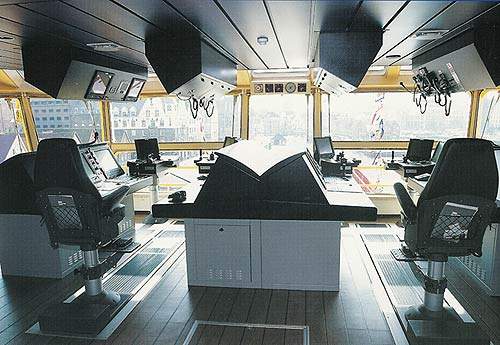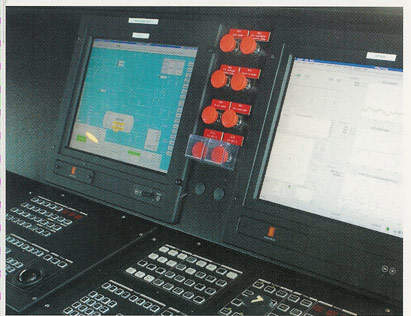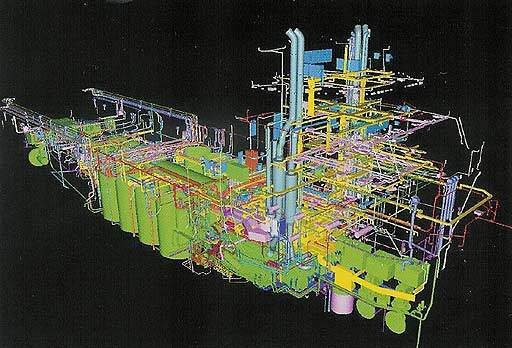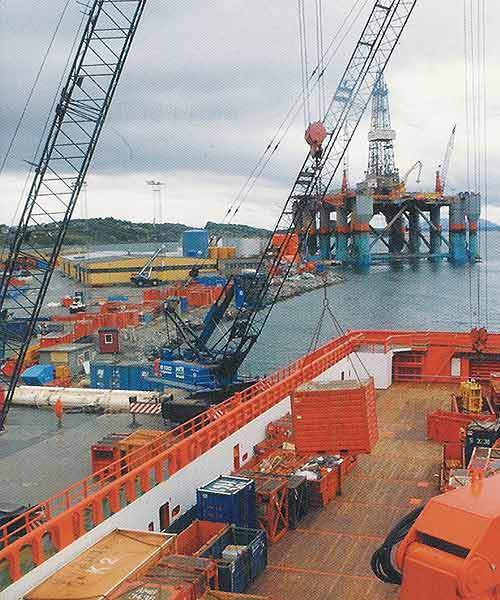The support vessel Viking Energy has been built at the Kleven Maritime shipyard in Norway for its owners Eidesvik and started on a ten-year charter for Statoil. It is the world’s first LNG-fuelled supply/cargo vessel, designed by Vik-Sandvik as a response to industry demands for minimising greenhouse gas emissions.
The Viking Energy has an overall length of 94.9m and a length between perpendiculars of 81.6m. It has a moulded breadth of 20.4m. The depth to the second deck is 6.6m and the depth to the first deck is 9.6m. The supply vessel has a maximum draft of 7.9m and cargo deck area of 1,030m³.
It has complement of 24 crew, accommodated in 12 single berths and five double cabins.
The vessel will take supply materials to Statoil’s North Sea platforms. It can carry 1,300m³ of fuel oil, 2,000m³ of water ballast or drill water, 1,100m³ of potable water, 200m³ of methanol, 800m³ of brine, 900m³ of liquid mud and 450m³ of dry bulk. The vessel has a gross tonnage of 5,073t and a net tonnage of 1,521t. Its deadweight is 2,886t at 5.9m draught.
DUAL FUEL MARINE ENGINES
The Viking Energy features dual fuel engines, with a consequence that it can run on both LNG and ordinary marine diesel oil in any proportion. Using LNG results in a 90% reduction in the outlet of NOx (approx. 200t a year) as well as a 30% reduction in CO2. Tests have shown that the vessel has a fuel economy rate of 30% better than that of diesel.
In order to use gas as a fuel, safety is a main priority and this has remained an important aspect in the design. The engine system is divided into fire-proof and explosion-proof zones and a number of constructive safety measures have been included. The storage of the LNG is in a vacuum insulated tank with a gross volume of 234m³. This is built as a pressure vessel and a vaporiser with a built-in coil pressurising the tank.
ENGINES
The electric power for propulsion and other services is derived from four main gensets. The main engines are Wartsila 6032 DF 2,010kW engines units, although there is also a Caterpillar 3304T 116kW emergency genset.
These gensets are linked to a pair of Rolls-Royce Contaz 25 contra-rotating 3,000kW stern thrusters and two Rolls-RoyceTT 2200 SS 1,000kW tunnel thrusters in the bow. The vessel also has a Rolls-Royce ULE 1201 880kW azimuthing retractable thruster for manoeuvring. This complement gives the Viking Energy a top speed of 16kt fully loaded.
The electric propulsion systems were supplied by ABB in a workscope that included a complete package of variable speed drives and power distribution as well as the electric propulsion and the thrusters. The vessel uses Direct Torque Controlled (DTC) frequency converters that afford accurate control of thruster magnitude and azimuth, leading to better manoeuvrability of the vessel. This type of motor drive directly reduces vibration and noise in the vessel, benefiting comfort and the working environment.
CONTROLS
In order to minimise fuel consumption, Kongsberg Simrad has used their new GreenDP system, which features predictive control logic instead of reactive control for an improved thruster use of 20% as well as a reduction in fuel consumption and greenhouse gases. It also resulted in a 50% to 80% reduction in power variations.
The DP system, thruster control and automation system was supplied by Kongsberg Simrad. The bridge is equipped with an advanced control system based on two identical operator stations, each centred around a main DP chair located at the rear. The operator stations are arranged with the vessel operating and manoeuvring control on adjustable panels within easy reach of the chair.












